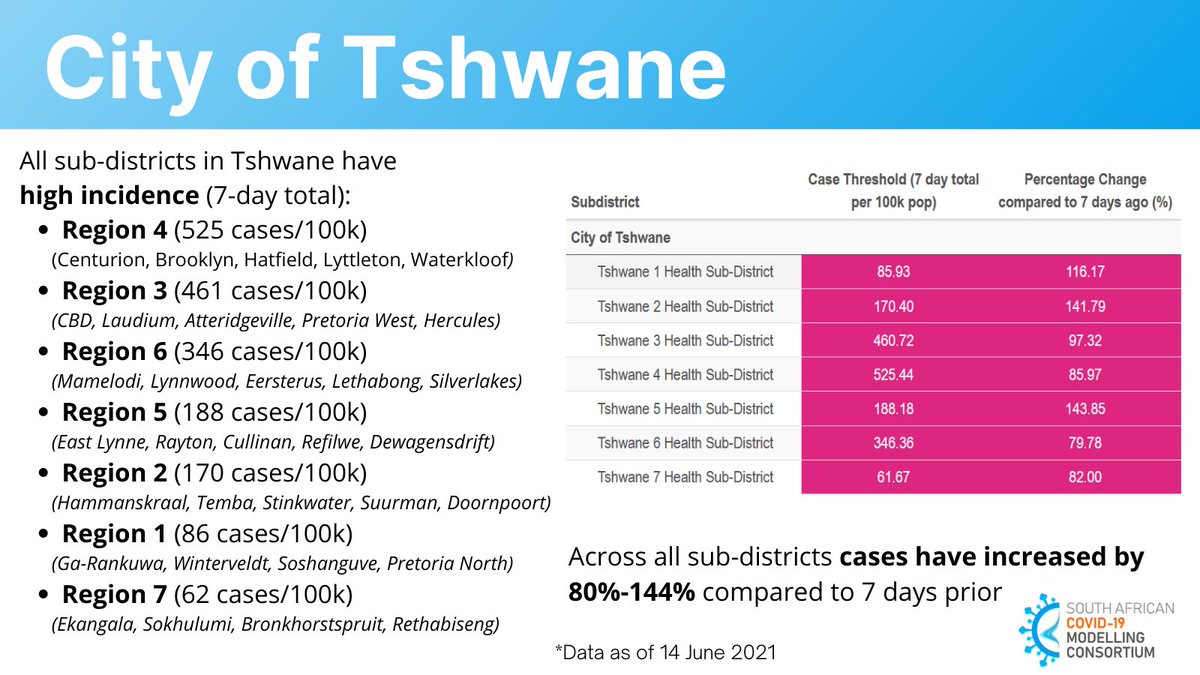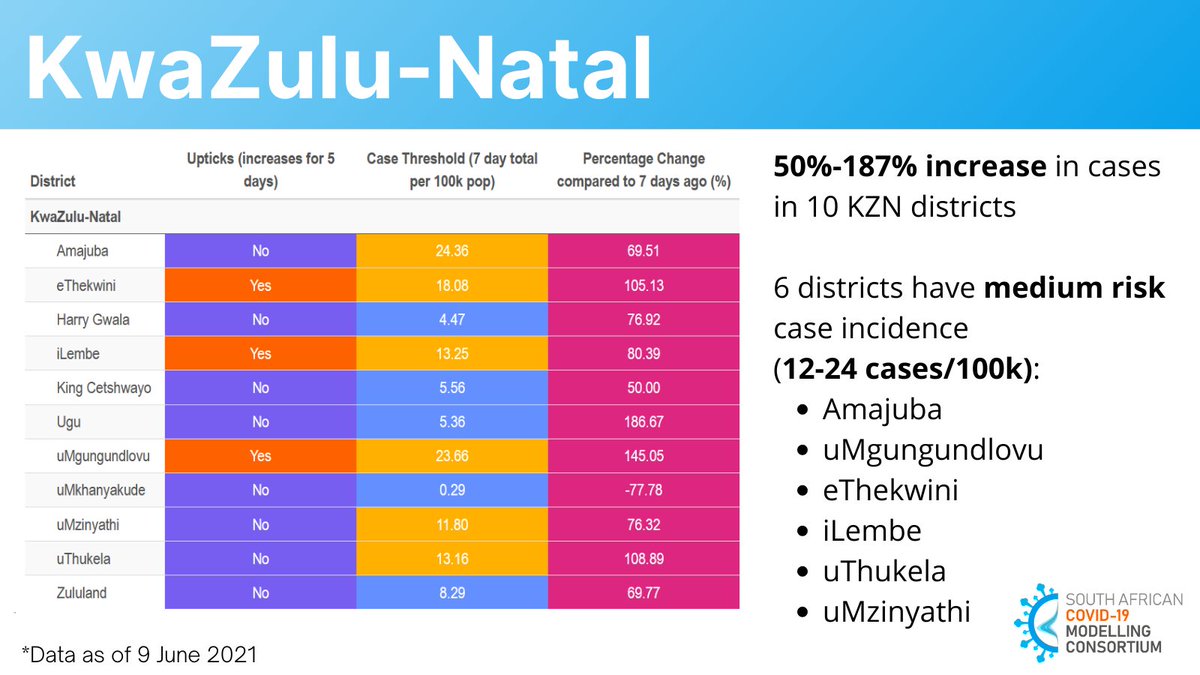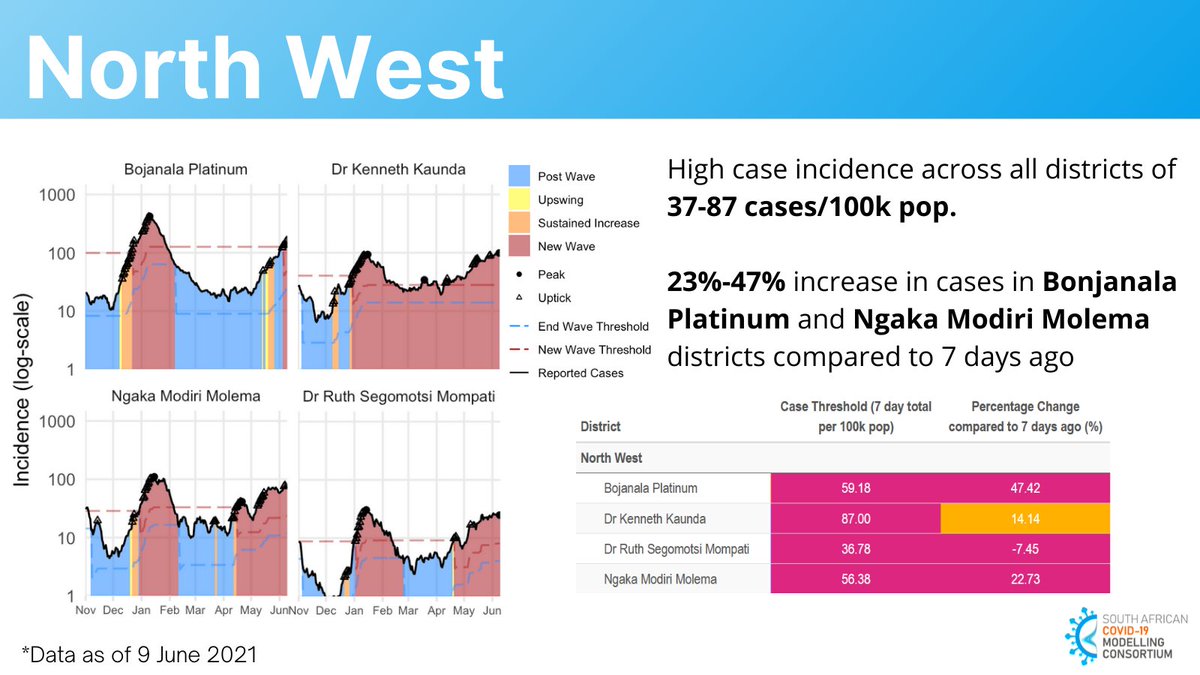
[Thread] South Africa has seen a recent rapid rise in #SARSCoV2 cases & unprecedented number of reinfections.
We've been working on bounding the levels of transmissibility & immune evasion that could explain #Omicron's spread in 🇿🇦.
sacmcepidemicexplorer.co.za/downloads/Pear…
#NotYetPeerReviewed
We've been working on bounding the levels of transmissibility & immune evasion that could explain #Omicron's spread in 🇿🇦.
sacmcepidemicexplorer.co.za/downloads/Pear…
#NotYetPeerReviewed
https://twitter.com/cap1024/status/1466840869852651529
We find that #Omicron is likely more transmissible than #Delta. This finding holds across a wide range of assumptions about immune evasion that are consistent with early neutralization studies.
Our analysis includes several steps.
#NotYetPeerReviewed
Our analysis includes several steps.
#NotYetPeerReviewed

First, we analyze trends in S-gene target failure (SGTF) at the provincial level. SGTF is a marker of #Omicron sublineage BA.1. Our updated model accounts for SGTF being an imperfect marker, & we now fit the model to data through 6 December.
We estimate a growth advantage for #Omicron of .32 (95% CI: .27 - .39) in Gauteng Province, corresponding to a doubling time of about two days.
#NotYetPeerReviewed
#NotYetPeerReviewed

We use the estimated proportion of samples with SGTF and the time series of infections to simulate potential growth trajectories for #Omicron and background variants (mostly Delta).
#NotYetPeerReviewed
#NotYetPeerReviewed

We then estimate the time-varying reproduction numbers based on the simulated infection time series. We find that the relative Rt during mid-Nov was 4-4.7 (medians), depending on what we assume about the time between infections (generation time) of #Omicron.
#NotYetPeerReviewed
#NotYetPeerReviewed
Next, we calculate mathematical model-based reproduction numbers of #Omicron & #Delta under current conditions. We vary immune evasion for #Omicron, which gives different transmissibility values to match the relative Rt values found in the previous step.
#NotYetPeerReviewed
#NotYetPeerReviewed
From this, we derive the plausible relationship between the amount of immune evasion and transmissibility for #Omicron (with confidence bounds).
We highlight the range of values consistent with lab studies of immune evasion (yellow).
#NotYetPeerReviewed
We highlight the range of values consistent with lab studies of immune evasion (yellow).
#NotYetPeerReviewed

We also consider other assumptions for baseline immune fraction & background immune evasion. They also indicate #Omicron is likely more transmissible than #Delta, BUT do contain more extreme immune evasion regimes where #Omicron would be less transmissible.
#NotYetPeerReviewed
#NotYetPeerReviewed

We will continue to refine these estimates & look forward to peer review. We hope these estimates will be useful for public health decision making. They also indicate that it is critical to gather detailed epidemiological data on changes to generation time.
#NotYetPeerReviewed
#NotYetPeerReviewed
Based on these results and emerging global trends, decision makers should assume that infection rates will be very high. Given that, existing policies on self-isolation times, testing, and contact tracing activities may need to be reevaluated.
#NotYetPeerReviewed
#NotYetPeerReviewed
Code for all analyses is available from github.com/SACEMA/omicron… (n.b., we are still pursuing authorization to make some of the data publicly available).
#NotYetPeerReviewed
#NotYetPeerReviewed
This work was led by @cap1024, in collaboration with @sheetalsilal, @DubzeeLi, @jd_mathbio, @bolkerb, @seabbs, @_nickdavies, @carivs, @barnardresearch, @JemBingham, @lisejamz, @GoNevashan, @hivepi, @SACEMAdirector, and others not on Twitter.
@saCOVID19mc #SACEMA @HE2RO_SA @nicd_sa @cmmid_lshtm @scienceSUN @NRF_News @UCT_Research
@threadreadapp please unroll!
@threadreadapp please unroll!
• • •
Missing some Tweet in this thread? You can try to
force a refresh










